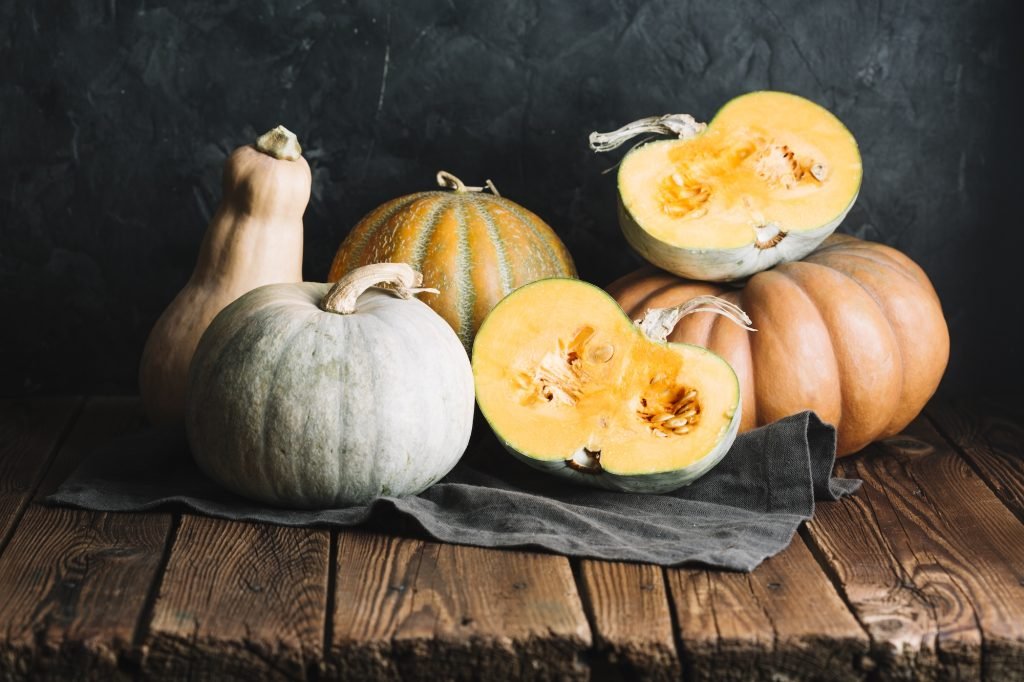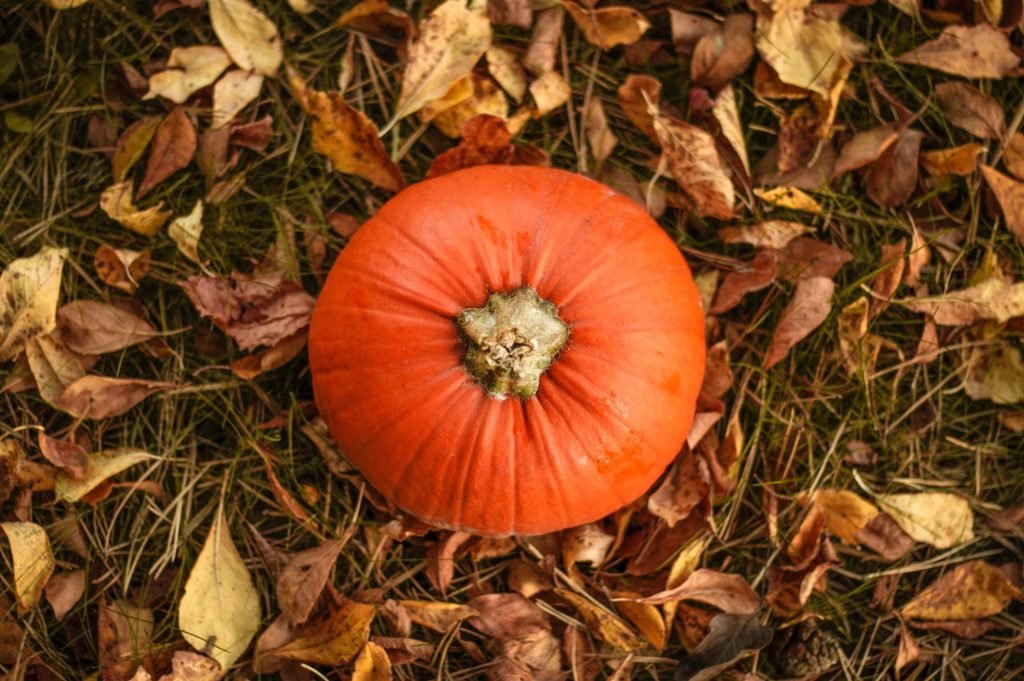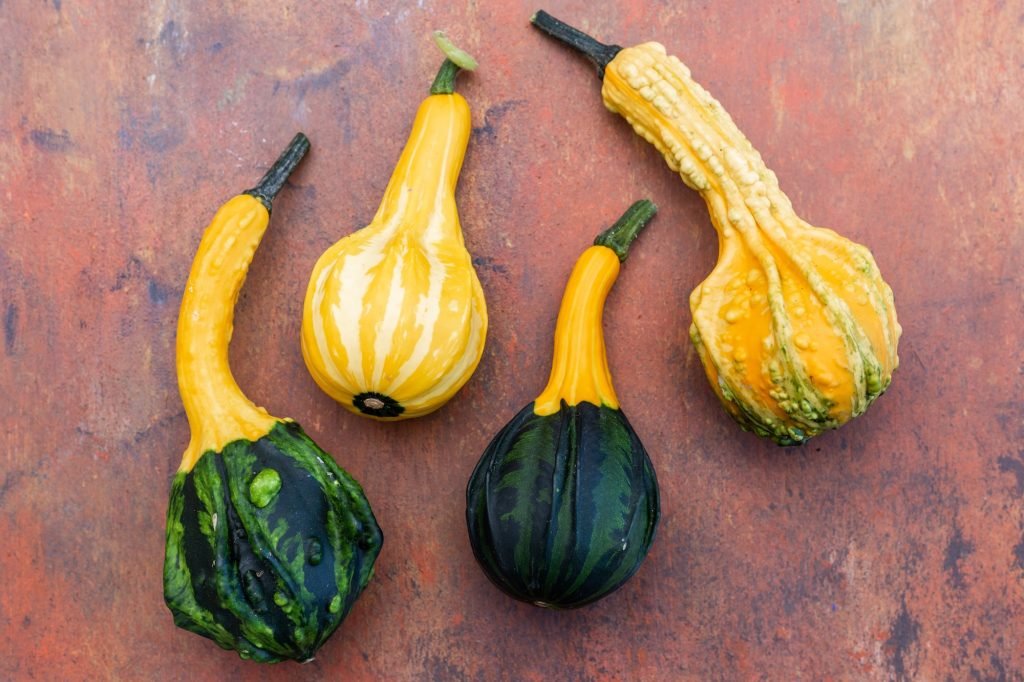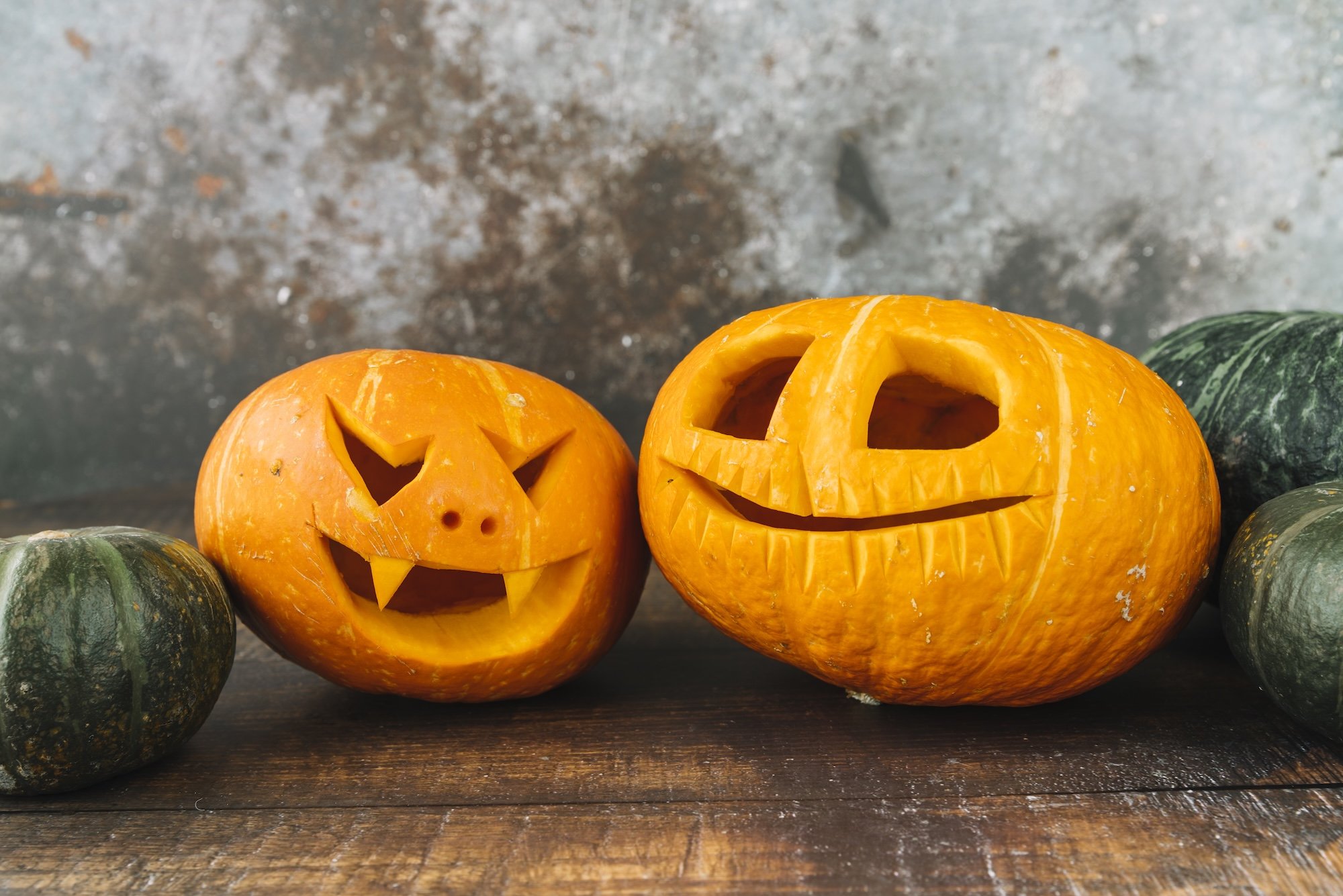The Pumpkin is the star of the autumn season and also of Halloween, present in our homes both as food for delicious seasonal recipes and as a decorative element with its numerous ornamental cultivars grown today. Belonging to the botanical family of Cucurbitaceae, it is an annual species that is characterised by its creeping habit and tendrils with which it anchors itself. but the real star are its fruit, in botanical jargon peponides, which varies in shape and size according to variety.
Origin and spread
With an ancient history, the gourd was selected from wild forms more than 4000 years ago in Central America where it was cultivated by the local indigenous peoples both as a staple of their diet but also for purposes such as food preservation or for everyday objects, and the oil-rich seeds were also widely used.
With the discovery of the New World, the pumpkin was introduced to Europe, arousing such curiosity that it became widely cultivated throughout the world, including in colder climates. Great fame was achieved in the United Kingdom in the 19th century thanks to the Halloween tradition, which later spread to Italy.

Cultivation
Whether you are an experienced grower or a novice orchard enthusiast, knowledge of pumpkin-specific aspects, techniques and cultivation strategies can help achieve a bountiful autumn harvest.
The right variety in the right place: depending on the end use and available space, the first key step is to choose the variety to grow, which is also influenced by the climate and weather conditions in your area. The soil to be used for transplanting is also important: it must be well draining, deep and with plenty of organic matter, as well as exposed to full sun, as the pumpkin plant requires adequate light for better vegetative growth and full flowering followed by excellent fruiting. When planting from late spring onwards depending on thermal conditions, do not place the seedlings too close together as many varieties then tend to grow to a very large size.
During cultivation, it is important to remove possible weeds within the planting area by hoeing, or alternatively by using a mulch cloth; the soil should always be kept moist but free of water saturation.
Growing pumpkins is also a nice activity to do with children, starting with sowing in a vegetable garden, the best time is in April, when there is no risk of late frost and when temperatures are stabilised, while it is possible to bring forward to March if the seeds are placed in pots in a heated seedbed.
For harvesting in general, make a precise cut when the stalk has become completely suberified and the skin is difficult to cut with nail pressure, taking care when handling the fruit not to cause wounds or bruises that could lead to rot. Then store the harvested pumpkins in a cool, dry place, avoiding damp and too cold spaces.

The pumpkin in tradition
With cultural and historical significance, pumpkins often represent the end of summer and the beginning of autumn. The carving practice, originally using turnips called “Jack-o’-lanterns,” originated in Ireland, a reference to the legend of “Stingy Jack,” who repeatedly tricked the devil in life. However, the devil refused to let him into hell upon his death, chasing him away and giving him a piece of burning coal, which Jack placed in a hollowed-out turnip for light. Legend has it that he still wanders the world with his lantern!
Following immigration to America, the Irish discovered pumpkins, so perfect at carving that they became the absolute stars of Halloween. There are numerous festivals and events around the world featuring the pumpkin, from harvesting to courses to create the scary lanterns!
Nutritional properties and uses in cooking
A source of vitamins (A, C, E and B vitamins) and low in calories, pumpkin provides the body with natural antioxidants with benefits for the skin, immune system and eyesight, and its fibres promote regular digestion. There are many varieties and cultivars of edible pumpkin available today belonging to different botanical species, such as Berrettina, Delica, Lunga di Napoli, Marina di Chioggia, Moscata di Provenza, Violina Rugosa, Zucca Hokkaido and Zucca Spaghetti. However, pumpkins are not all the same; each variety differs from the others in terms of aesthetic aspects such as shape, size, colour of the skin (pericarp) as well as organoleptic characteristics such as flavour and texture, taste and aroma of the pulp.
Each of them is suitable for specific recipes to best express their particular sensory potential. Cakes, pancakes, ravioli, gnocchi, tortelli, mostard, minestrone, creams, soups, and even bread, risotto, desserts and biscuits: pumpkins can be used extensively and versatile in the kitchen!
Ornamental pumpkins
There are many varieties used for decorative purposes – white, multicoloured, bottle-shaped or mushroom-shaped, right up to the classic and best-loved ‘Jack be Little’ or the Baby Halloween Pumpkin – which can be used to add an accent of originality and colour to your indoor and outdoor spaces by creating centrepieces or garlands, as well as for a touch of creativity and fun during Halloween for the little ones, who can try their hand at painting or carving them with the help of an adult.
You can also hollow out the pumpkin by removing the pulp and letting the inside dry out to then create elegant arrangements with fresh or dried flowers that will become a focal point in your home!












